AM Radio’s Slow Demise
Car manufacturers are slowly removing an old format.
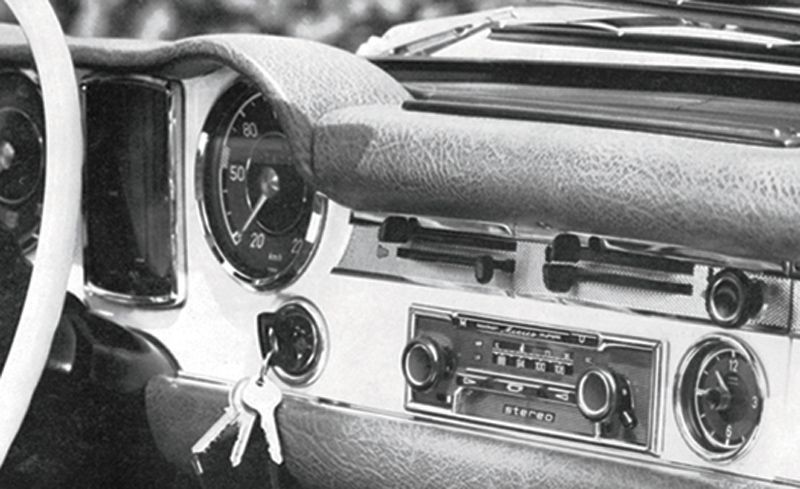
WaPo’s Marc Fisher reports on the “End of a love affair: AM radio is being removed from many cars.”
America’s love affair between the automobile and AM radio — a century-long romance that provided the soundtrack for lovers’ lanes, kept the lonely company with ballgames and chat shows, sparked family singalongs and defined road trips — is on the verge of collapse, a victim of galloping technological change and swiftly shifting consumer tastes.
The breakup is entirely one-sided, a move by major automakers to eliminate AM radios from new vehicles despite protests from station owners, listeners, first-responders and politicians from both major parties.
Automakers, such as BMW, Volkswagen, Mazda and Tesla, are removing AM radios from new electric vehicles because electric engines can interfere with the sound of AM stations. And Ford, one of the nation’s top-three auto sellers, is taking a bigger step, eliminating AM from all of its vehicles, electric or gas-operated.
Some station owners and advertisers contend that losing access to the car dashboard will indeed be a death blow to many of the nation’s 4,185 AM stations — the possible demise of a core element of the nation’s delivery system for news, political talk (especially on the right), coverage of weather emergencies and foreign language programming.
“This is a tone-deaf display of complete ignorance about what AM radio means to Americans,” said Michael Harrison, publisher of Talkers, a trade journal covering the talk radio industry. “It’s not the end of the world for radio, but it is the loss of an iconic piece of American culture.”
For the first hundred years of mass media, AM radio shaped American life: It was where Franklin D. Roosevelt delivered his fireside chats; where a young Ronald Reagan announced Chicago Cubs baseball games; where DJs such as Wolfman Jack along the U.S.-Mexico border, Larry Lujack in Chicago, Alan Freed in Cleveland, “Cousin Brucie” Morrow in New York City and Don Imus in California, Texas, Ohio and New York howled, growled and shouted out the latest pop hits.
Through the snap and crackle of distant lightning and the hum of overhead power lines, AM radio’s sometimes-staticky signal dominated the country’s soundscape. From the 1950s into the 1970s, Top 40 hit music stations in many big cities maintained astonishing shares of the audience, with 50 percent and more of listeners tuned to a single station, meaning that people could walk along a city sidewalk and hear one station continuously blasting out of transistor radios, boomboxes and, above all, car radios.
But technology moved on, and the silky smooth sound of FM radio and then the crystal digital clarity of streaming stations and podcasts narrowed AM’s hold on the American imagination.
I would note that “into the 1970s” was half a century ago. Cars have had FM radio, which not only sounded better but doesn’t cut out when you go through tunnels and underpasses, since the 1950s and the ability to play external media (8-tracks, cassettes, CDs, MP3s, etc.) since the 1960s.
It has been argued for decades that Rush Limbaugh, and the wave of imitators that followed, almost single-handedly saved AM radio. The talk format doesn’t need the same level of sound quality and has the benefit, for long-haul truckers and the like, of staying in range for a very long time if the station’s signal is strong.
But times change. Technologies adapt. It’s been a while since auto companies installed 8-track players.
All of our cars have AM/FM players but I can’t recall the last time I intentionally tuned into terrestrial radio. I listen almost exclusively to podcasts or music that I stream from my phone. So, the only time I “listen” to AM or FM radio is when the car has disconnected itself from the phone and I have to reestablish the Bluetooth link.
Regardless, folks are complaining.
[M]any AM stations don’t offer alternative ways to listen to their shows. Even those that do say their audience, much of which is older, tends not to be adept at the technologies that let drivers stream anything they choose from their smartphones into their car’s audio system. And despite the growing popularity of podcasts and streaming audio, a large majority of in-car listening remains old-fashioned broadcast radio, according to industry studies.
The removal of AM radio from cars — where about half of AM listening takes place — has sparked bipartisan protests. Some Democrats are fighting to save stations that often are the only live source of local information during extreme weather, as well as outlets that target immigrant audiences. Some Republicans, meanwhile, claim the elimination of AM radio is aimed at diminishing the reach of conservative talk radio, an AM mainstay from Sean Hannity to Glenn Beck to dozens of acolytes of the late Rush Limbaugh. Eight of the country’s 10 most popular radio talk shows are conservative.
“The automobile is essential to liberty,” right-wing talk show host Mark Levin told his listeners last month. “It’s freedom. So the control of the automobile is about the control of your freedom. They finally figured out how to attack conservative talk radio.”
Yes, Mark, Ford is conspiring to take you off the air.
The emergency weather argument is at least worthwhile:
One evening this spring, when severe thunderstorms rolled into Bryan, Tex., with tornadoes threatening parts of the area, Bill Oliver, the news director at WTAW, the area’s century-old AM station, connected to the studio from home and stayed on the air deep into the night, giving listeners details on which neighborhoods and streets were in a twister’s path.
Through most of the day, WTAW pumps out the same right-wing nationally syndicated talk that dominates the AM dial in much of the country — Hannity, Beck and Limbaugh’s successors, Clay Travis and Buck Sexton. But the station’s morning show is all local: It’s three hours of news (the top story one day last week was the town’s acquisition of three new firetrucks), talk (the mayor comes on every week to take calls from listeners) and community (the director of the local theater spent nine minutes talking about the shows she’s staging this season).
“We may not be the first station you turn to, but when the weather’s bad, when the game is on, when you need to know what’s happening where you live, we’re the only place,” said Ben Downs, the owner and general manager of WTAW, which serves the twin cities of College Station and Bryan. “AM is where news and talk have gone to live. And in the great American Midwest, agricultural radio is on AM. Our audience has gotten older, but when something big happens, everyone in town knows where to turn.”
Downs’s company, Bryan Broadcasting, owns 15 stations in town, most on FM, but WTAW is his No. 1 revenue producer and the only one that employs news reporters and a meteorologist. That’s a rarity on any commercial station these days, after waves of corporate consolidation and budget cutting over the past three decades stripped much of American radio of its local content.
But broadcasters say that in most markets, there’s at least one station, usually on AM, that, like WTAW, stresses its local ties, covers weather emergencies and promotes community causes.
But are they sitting in their cars when they do so?


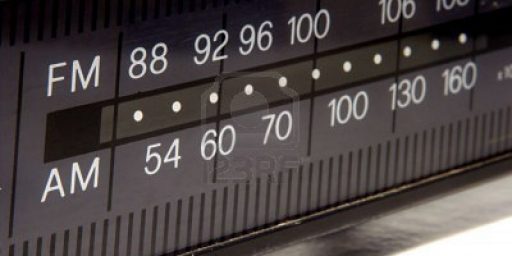
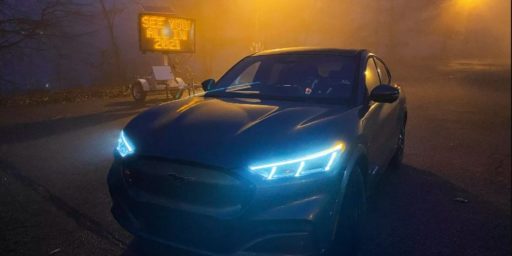
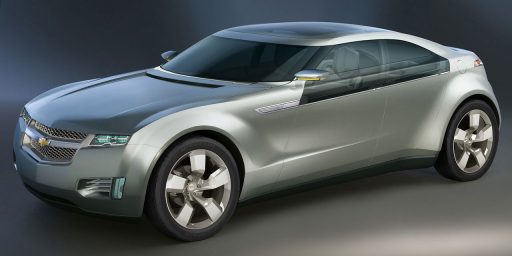
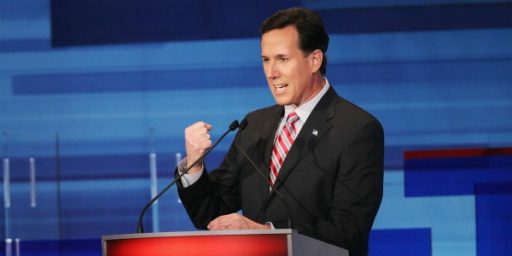
AM radio is still a thing?
As far as weather emergencies go, to hear those announcements the radio needs to be turned on and tuned to AM. That doesn’t happen anymore. Also weather alerts are pushed on FM stations and if you let it, your phone can be overwhelmed with notifications, even weather related. There is little or no reason for car makers to continue installing AM radios.
Not that long ago aftermarket car sound systems were very popular. People got them because cars usually came only with a radio, and people wanted to play their cassette tapes instead, and later CDs.
The trend has wound down. Partly because CD players were included in some lower end models, when previously they came mostly in luxury models, but also by the added ability of the built-in system to connect via bluetooth to one’s phone.
But aftermarket sound systems are still available.
Looks like I won’t have to hold on to my trusty Audiovox FM converter much longer!
@Kathy:
But they work in fewer and fewer cars, since in the majority of new autos the “car radio” is just one of many functions the display and controls are used for. In all three post 2010 cars I’ve owned you can’t swap in an after market audio system.
@MarkedMan:
That converter is more expensive today, than it was when new.
Seems this would be much easier to resolve by extending the FM radios to cover the actual weather radio band.
@Sleeping Dog: By an order of magnitude!
I fondly remember driving across S Dakota at 3 AM and getting a clear KMOX signal all the way from STL and listening to Jim White dress down the idiots who’d call in. I also remember laughing my ass off at Jack Carney’s bad jokes on his weekday AM show, and Anne Keefe and…
All good things must end and those days are long gone. KMOX went full on RWNJ talk radio somewhere along the line and if they go belly up now, it won’t be any great loss.
@MarkedMan:
The audio system in our camper, in a word, sucks, but all sorts of ‘controls and settings are accessed through the radio. Initially I looked into aftermarket, but came across lots of tales of woe from those who went that route. Until I came across a company that has a device that handles the communication between the aftermarket audio system and the vehicle. Works very well and only adds, {smirk} $500 in cost to the upgrade. Needless to say I passed and have been piecemealing an upgrade. Last year speakers, this year a powered subwoofer and maybe an amp between the radio and the speakers. Though I’m thinking about looking for a 12v amp/bluetooth receiver and let my phone control the audio and just leave the stock radio to manage vehicle settings.
I listen to AM radio locally because of its hyperlocal content and because (opposite) the local NPR affiliate is on AM (its FM sister plays the flagship NPR shows and is otherwise classical). Another local AM station was, up till about a decade ago, the home of local talk, local politics, school board, activities that everyone who had the luxury to spend a couple of hours in the morning listened to and from which came a common understanding of where those things stood. I would be sorry to lose those, but I probably listen to the local NPR affiliate as much on my computer as I do in my car so there’s that.
My kids have immediately connected a phone to the car (it’s old enough you need to connect the aux cord) for years so I am getting used to the idea of just streaming preferred programming from a device. My daughter and I did 10 hours of car time recently and never had to hunt for a station update.
My local RWNJ talk station is still on AM, but it has an FM broadcast as well.
Either way, I can’t remember the last time I listened to any terrestrial radio, let alone an AM station. It’s been either SiriusXM or Spotify for well over 10 years.
There are aftermarket units available for my make and model of car, but one has to pretty much disassemble the entire dashboard and center console area to install them, and IMO they don’t offer much more than the stock unit, so why bother?
@Mikey: To clarify my previous comment (and because this is the edit button’s day off), I never listen to terrestrial radio in my car. At the office there’s a system that runs the local FM classic rock station for background noise. But I still can’t remember the last time I listened to anything on AM.
In re: Levin’s gripes, it is so incredibly tiresome for right-wingers to complain about what is clearly a market-driven decision (not to mention that they are more than happy for corporations to do any number of things that are of moral dubiousness but sure, AM radio is about freedom. Ugh).
I must have last tuned the radio in my car sometime in 2012, if that late. Since then it’s all audiobooks and podcasts, with an old mix CD for odd, short drives.
At the office, there’s an old radio tuned to some FM music station I do my best to ignore.
The EV interference might be a fair reason but otherwise why are they worried. It’s all on the same chip. It’s a menu on a digital screen. Maybe some benefit of doing away with the antenna, but that is more for FM.
On the alternative, it is simple enough to get an after market receiver that does it all, AM, FM, bluetooth, aux port, USB. And it’s tiny. Maybe 2″ deep.
On expects the real goal is to push the subscription services that few seem to be taking up. Downside of that is when technology changes, the whole thing dies. Sometimes the whole car as with some Lincolns that had a G3 module for some service which is no abandoned (in some vehicles only 2 yrs old), but when the module fails it kills the network taking down most of the car. Thankfully this has been diagnosed so digging out the module and pulling the plug restores the network.
@Steven L. Taylor:
One wonders what’s preventing him from lifting himself by his bootstraps to solve his problem.
There were two things I wasn’t happy with on our Honda Odyssey. One was the constant irritation from the “intelligent” cruise control, which I finally managed to reset to just being a dumb cruise control. The other is the radio. I’ve realized, however, that half my issue with the radio is actually with satellite radio. My local classical FM station sounds better than the satellite classical channel, even though we’re pushing the edge of their reception area.
But we’re about to launch off on a road trip to ND and CO, so the satellite radio will be a godsend. I couldn’t take a full day of C&W, baseball, god, and RW politics, which seems to be all you can get AM or FM in the middle of nowhere. I’ll put up with the strings seeming to overload the speakers.
Wonderful WINO
George Carlin
@Sleeping Dog: Even with emergency highway condition alerts, usually, they’re being broadcast from low-wattage transceiver on the flashing travel alert sign. Driving by at 70 mph, the likelihood that I will get my radio switched over to am, and dial in the frequency before I leave the range of the broadcast is pretty small–or would have been small before my tremor got worse. Now, I can’t even operate functions on “My Link” even when the car is stopped.
@Steven L. Taylor: That’s why I usually only listen to RWNJ radio for comic relief. And since it’s not funny that way anymore, I listen less and less. I hardly even recognize any of the current people I find on am talk radio–a service for which the small exurban Portland community I live in has 5 outlets additional to the however many that PDX has. It must cost virtually nothing to run a radio station with the level of RW political saturation on local radio here. They can’t possibly all get enough audience to be viable with a population base of about 45k otherwise.
AM is about all I listen to in the overnights or early mornings on the road, usually a rotating combination of WLW, WBT, WHAS, KDKA, CFZM, WABC and WJR. I see this talk of streaming audio, which means getting some sort of add on equipment I am assuming. All that is in my car is an AM/FM radio.
You should modulate your amplitude, not your frequency, like the Good Lord intended! The woke mob with their alternative lifestyles are ruining this country!
Your radio waves are supposed to jump up and down, not wiggle side to side like some hussy.
@Gustopher: Thanks, I was trying to remember what AM stood for.
@Kathy:
There is no question: Manufacturers are creating an information center, rather than a Radio in the dash, and that makes aftermarket more complicated.
As a fan of the Honda Element (2009 ECamper and 2011), there were two ways to do this: to add Bluetooth capabilities.
On the 2011 I chose to put in an adapter that connected via the SiriusXM sat link. Retains the OEM look but allows for cell and Bluetooth audio.
On the 2009, I went more extreme – pulling out the head unit and replacing it with one that would do wireless Android Auto Apple Car Play. Added an additional bass amp as well which boosted the wimping sounding OEM amp onto something that preformed much better. Touchscreen as well, natch.
I was disappointed that at my price point that I could not get HD Radio (DAB), but I’m more into streamed content. AM? Wasn’t even a consideration. Have to say I haven’t listened in decades.
On the dearly departed 2017 Chevy Bolt, that would have never been a consideration. It was more a computer monitor than a radio.
Considering another Bolt (2023 EUV), while I can still order one. $32.5K for electric w/ panoramic glass and upgraded safety and audio… less various rebates is mighty tempting. I do hate paying $35 at the gas pump.
You still have AM radio in the US?
My word. Default in UK (and I think, but haven’t checked) most Europe is now DAB and FM.
I think AM car radio went out with cassette players, around the turn of the millenium.
It’s another odd little thing where the US is more conservative than Europe. I understand you still use cheques and signed-for credit cards?
I’ve not used a cheque, apart from for a house purchase, in decades.
Lots of people, including me, hardly even use cash any more; most smaller (under £100) payments now are by contactless card or smartphone, larger payments by card plus PIN.
0-60 in about 3 seconds, but No AM radio available in our Tesla
It’s been years since I’ve listened to anything but my own Qobuz playlists & favorite albums in the car. I think the last time I listened to AM radio was Oakland A’s games in the late 80s.
Thinking about AM radio brings back happy memories of KFRC – one of the great top 40 stations – which seemed to be on everywhere when I was a little kid growing up just north of San Francisco.
That was followed by KTIM AM, a mirror of the wonderful KTIM FM “North Bay Noise” in San Rafael in the 70s during my teenage years. Especially great if you only had an AM radio in your car.
Well, that’s all gone off to wherever good old days go when they are over… but the memories are pretty special.
The Beach Boys – That’s Why God Made The Radio
@anjin-san: ” I think the last time I listened to AM radio was Oakland A’s games in the late 80s.”
Never been much of a baseball games, but I used to go see the A’s with my father in the early 70s. I was surprised to discover how saddened I was by Vida Blue’s passing…
@wr:
My dad also took us to A’s games in the early 70s, great times. We were big autograph hounds, I had Reggie Jackson, Catfish Hunter, Vida, Rollie Fingers, etc.
I did a lot of corporate events with the Giants in the early part of their championship run & Vida was our go-to guy for fantasy batting practices @ AT&T. He was a great guy to work with. It was fun getting to know one of my childhood heroes – a Bay Area legend who will definitely be missed.
@MarkedMan:
@Liberal Capitalist:
I haven’t really paid any mind to car sound systems since the late 90s, therefore I was very unaware of all such facts.
My current car is a 2011 Corolla. It came with an AM/FM radio and CD player. It has no connectivity of any sort, other than an AUX port. These days I prefer a portable bluetooth speaker that sits on the passenger seat.
@gVOR08: I love the adaptive/”smart” cruise control on my Camry.
@JohnSF:
I noticed when I was in London 4 years ago that no one wanted cash and tap to pay was ubiquitous.
@JohnSF:
Interesting. Depending on the country, many businesses in Europe *only* take cash, which has shocked me while traveling. This is not the case in the UK, then, I’m understanding.
@JohnSF: @Steven L. Taylor: @DK: I can’t recall the last time I withdrew cash from an ATM, something I used to do at least two or three times a month. And about the only checks I write are for personal services like the lawn company.
@James Joyner: I still use checks for medical bills and government bills because they usually have an extra charge to use CC.
Because they can’t create a Shield etc, to protect the AM Signal ?